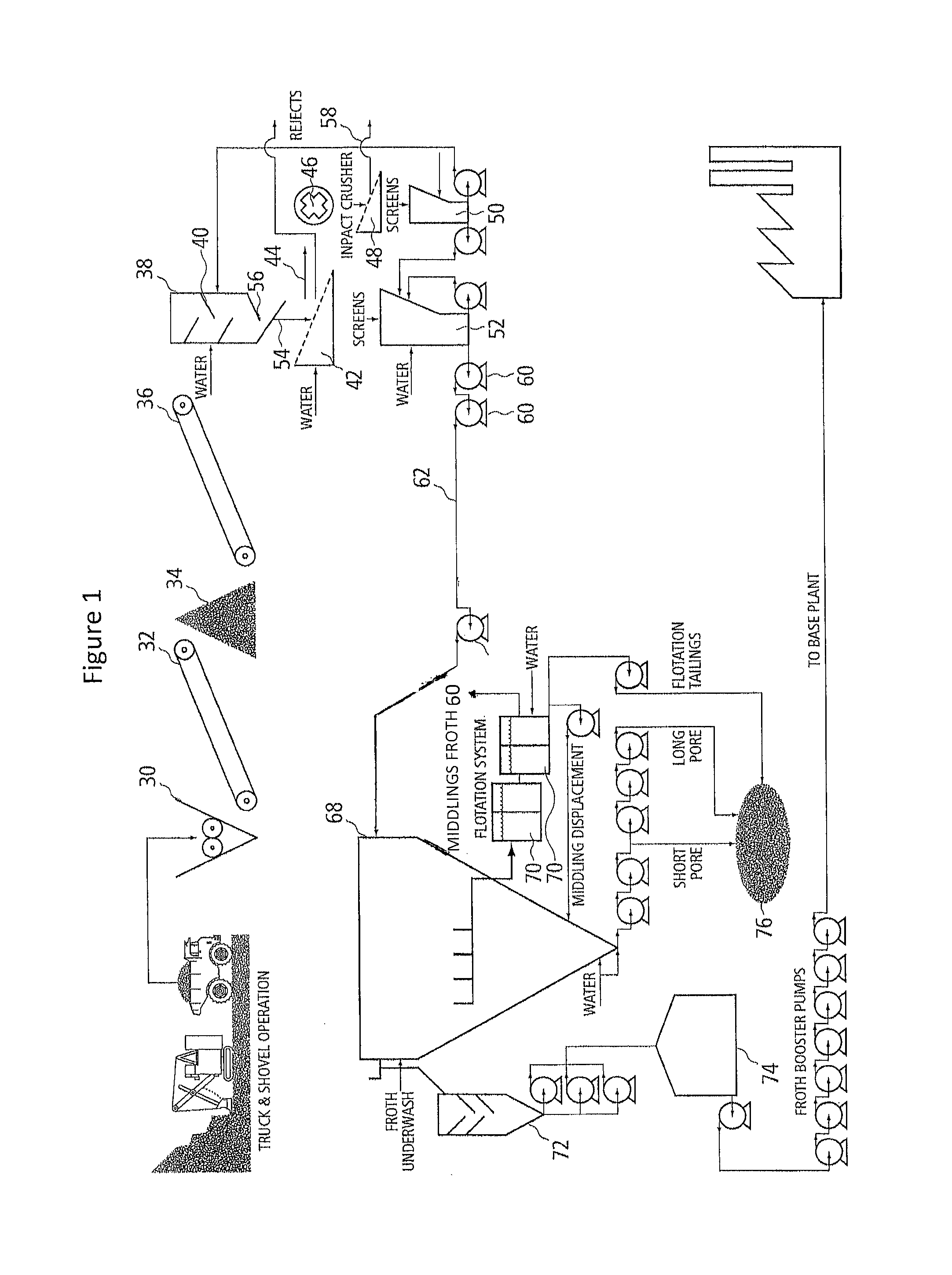Simultaneous determination of bitumen and water content in oil sand and oil sand extraction process samples using low-field time-domain NMR
a technology of oil sand extraction and simultaneous quantification, which is applied in the direction of nmr measurement, reradiation, instruments, etc., can solve the problems of short analysis time, high cost, and inability to accurately and/or repeatability the extraction process, so as to achieve rapid and simultaneous quantification of bitumen and water
- Summary
- Abstract
- Description
- Claims
- Application Information
AI Technical Summary
Benefits of technology
Problems solved by technology
Method used
Image
Examples
example 1
[0064]A typical commercial oil sand operation is shown in FIG. 1. More particularly, oil sand is surface mined and fed into a primary crusher 30 of the double roller type, to reduce the oversize to less than 24″. The crushed oil sand is carried by conveyer to surge pile 34 of oil sand. Oil sand from surge pile 34 is fed by conveyer 36 to a mix box 38, comprising a plurality of inclined plates 40. Hot slurry water is also added to the mix box to form an oil sand slurry. Mixing can also occur in a cyclofeeder or other slurry preparation units as are known in the art. Product slurry 54 leaves the bottom outlet 56 of mix box 38 and passes through screen 42 and, optionally, more hot slurry water is added. Product slurry enters a pump box 52 and rejects 44 are fed to an impact crusher 46 and screened again through screen 48. Oversize rejects 58 are discarded but screened material enters pump box 50, where more hot slurry water is added and then oil sand slurry is pumped into pump box 52.
[...
example 2
[0088]Eighty five oil sand samples from three separate mine core holes in the Athabasca oil sand deposit in Alberta, were sub-sampled in separate containers and analyzed by Dean-Stark extraction and by using a Bruker mq10 low field NMR instrument (1H frequency 10 MHz, Magnetic Field 0.23 T). The NMR samples were sampled into Teflon vials purchased from VWR International (PTFE jars, 15 ml, 34 mm height, 34 mm cap diameter, part number: 89026-160). This provides a container that fits inside the smaller mq10 instrument while keeping the entire sample within the sensitive region of the NMR probe. The Dean-Stark results were used as the accepted values for training sets and validation results.
[0089]In addition, 58 core hole samples from two separate core holes were sub-sampled into 250 ml Nalgene containers for analysis using the larger LF90II low field NMR instrument as described above.
[0090]Two pulse sequences were tested on oil sand samples using the mq10 instrument and the LF90II ins...
PUM
 Login to View More
Login to View More Abstract
Description
Claims
Application Information
 Login to View More
Login to View More - R&D
- Intellectual Property
- Life Sciences
- Materials
- Tech Scout
- Unparalleled Data Quality
- Higher Quality Content
- 60% Fewer Hallucinations
Browse by: Latest US Patents, China's latest patents, Technical Efficacy Thesaurus, Application Domain, Technology Topic, Popular Technical Reports.
© 2025 PatSnap. All rights reserved.Legal|Privacy policy|Modern Slavery Act Transparency Statement|Sitemap|About US| Contact US: help@patsnap.com



